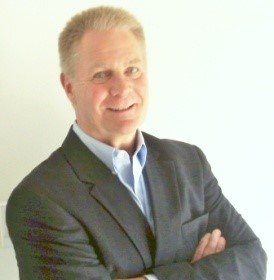This chapter is all about staying in the game. What do I mean by that? Well, to use a sports analogy, if you’re a professional athlete, the worst place to be is on the DL; the ‘Disabled List.’ When you’re on the DL, professional athletes can’t play in the game and must sit on the sidelines. When Baby Boomers get injured, they also must sit on the sidelines and stop playing the game. Whether it’s walking, running, dancing, or tennis, injuries make Baby Boomers stop exercising. Unfortunately for Baby Boomers, short stints on the DL often lead to permanent ones. When this happens, Baby Boomers become less active, less healthy, and often, less happy. Just because we have another birthday doesn’t mean we must give up the physical activities that we love, but also make us look and feel younger.
My guest today helps Baby Boomers stay in the game, play the game better, and play it pain-free. She provides a winning strategy for winning the game of life. Denise Smith is the owner of Smith Physical Therapy and Running Academy, located in Crystal Lake, Illinois. Denise is an injury prevention specialist, running technique specialist, and physical therapist.
Phil: Denise, you spent the early part of your career doing traditional corporate physical therapy. How did you decide to start your current practice and focus on injury prevention?
Denise: I’ve seen some changes over the past 15 years in the way healthcare is executed. There seems to be more of a focus on waiting for injuries to happen and then treat them. Insurance companies are restricting how that’s reimbursed. They sometimes punish you for getting hurt, or they make it very challenging for you if you get hurt. You must see your physician, and then your physician must refer you to someone or do some tests first before they’ll do anything else. I thought there must be a better way to do this. If we can prevent the injury, then we don’t have to spend all that money treating the injury.
As the baby booms are getting older, they do tend to get hurt because they don’t know how to move or how to address an issue if it comes up without running to see the doctor. My whole goal is to teach people, empower them to understand if you can make a joint move the right way, and support a muscle the way it’s designed to move, then the likelihood of an injury happening decreases dramatically. Though insurance companies don’t pay for prevention, some employers support that. A lot of people just take it upon themselves to take that next step and be proactive to prevent something from happening.
Phil: You have a very interesting definition of what an athlete is. Would share that with us and explain why it’s so important that Baby Boomers understand that definition.
Denise: I believe that an athlete is anybody that moves their body for exercise or activity. I think that society has taught us that an athlete is somebody who does a triathlon, a marathon, or exercises every day. I think that if you get out of your house or get off your couch and you go for a walk, or you play tennis, or you are outside playing with your grandchildren, you are moving and therefore, that makes you an athlete. Being an athlete is a skill that you must learn. Whatever sport you’re in, or whatever activity you do, there is a skill set that needs to be learned and taught. That makes you an athlete. Baby Boomers don’t stop just because suddenly they hit some age, doesn’t mean that you must stop moving. I believe that you must keep moving to keep moving. If you still believe and still want to do stuff, I don’t believe that an injury should sideline you, especially if it were preventable.
Phil: So, by your definition, almost anybody can be considered an athlete. Therefore, they can benefit from the education and the approach that you take.
Denise: Absolutely.
Phil: I think that’s important because, for Baby Boomers who have either maintained their physical fitness or have reclaimed it, movement on a regular basis is one of the key components of their success. We know that in your practice, you treat athletes of all ages but today, we’re focusing on Baby Boomers. Why do Baby Boomers come to you? What kind of Baby Boomer patients do you see?
Denise: A lot of them come because they had a friend that I treated, or worked with. It will peak their interest that they’ve decided to get back into running, or they are noticing with their golf swing, they’re not quite getting as much range of motion as before. Or, with tennis, they’re not as quick to recover from an injury, or if they tweak something, it takes them a little bit longer. They want to see what they can do to keep those injuries at bay or address something before it explodes. That’s usually how they find me. Something triggered them to look me up, or to figure out how to prevent an injury. They’ll start Googling, and my name will come up with some of the injury prevention education that we do here.
Phil: Why is it important for Baby Boomers to understand that the correlation between injury prevention and keeping active?

